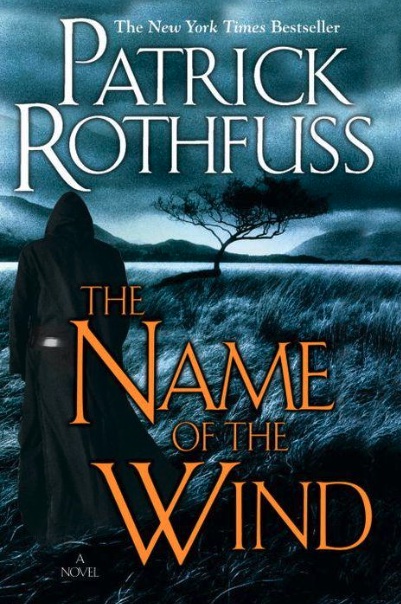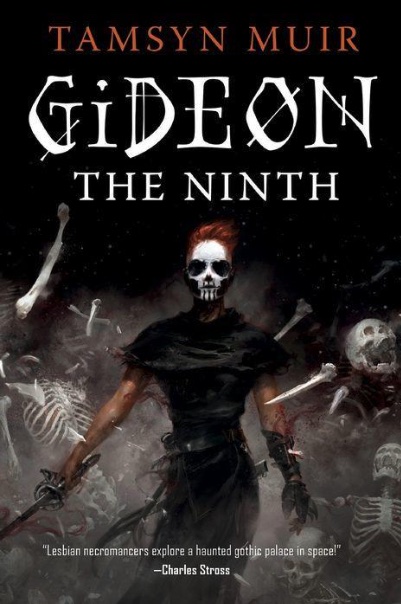Though Peregrin Took usually gets the cinematic credit, it was Bilbo Baggins who penned the line “there are many paths to tread.”

In this month’s post, I’ll use Bilbo’s “A Walking Song” to dig into the many varied paths fantasy authors traverse from coming up with a story idea to getting that idea published.
As a genre, fantasy has an interesting relationship with the world of publishing (take the very circuitous journey of The Lord of the Rings in the USA as an example), so it’s no surprise that authors face all sorts of difficulties when trying to break in, to get a book deal, to find an audience, etc. Likewise, I find a sort of solace in the fact that so many top tier authors take their own unique path to reach their publishing goals.
So how do fantasy author get their books published?
First note before digging in: I’ve limited my list to authors who published their first novel since the turn of the century, mostly to account for the internet as part of the publishing journey. Also, most of the authors I’m talking about have large readerships and have sold quite a few books. While I believe every author I’ll mention is exceptional–and that none of their paths to publishing should be viewed as repeatable, straightforward, direct, or any kind of easy–I find a lot of insight in how these different writers undertaken their professional journeys.
Second note: I’ve provided some visuals to help make these publishing journeys more digestible, but the images are necessarily (and purposefully) reductive.
Final note: In this month’s post I’m only looking at examples of authors entering the world of traditional publishing. Next month’s post will dig deep into author examples across indie publishing.
N. K. Jemisin: A Step-by-Step Publishing Journey
It’s hard to find a living writer more lauded than N. K. Jemisin–inside or outside speculative fiction. Some of her more recent accolades include a MacArthur Fellows “Genius Grant” in 2020 and winning the Hugo Award for best novel three times in a row (which has never happened before) for all three books in her Broken Earth trilogy.

Jemisin found acclaim early on in her publishing career, but her path to get there was fairly incremental.
After collecting rejections for two finished novels, Jemisin went to Viable Paradise, an intensive, one-week writing workshop focused on speculative fiction. Her experience there led her to start writing short stories, which then found homes in semipro and professional publications such as Ideomancer, Escape Pod, Strange Horizons, Apex Magazine, and Clarkesworld.
Meanwhile, Jemisin wrote a new, big idea novel. With some short stories to her name and a standout new manuscript, she secured a representation deal with her literary agent, Lucienne Diver. Diver shared the novel with a number of editors, but no one bit yet. It was only after Jemisin’s short fiction received both Hugo and Nebula nominations and she wrote another novel (which sold at auction in a six-figure deal) that her previous manuscript was published as well.
This was still before she even got to her Broken Earth trilogy, which really propelled her into wider recognition across epic fantasy, science fiction, and other genres.

What I see as the takeaways: Jemisin’s success was anything but overnight. She kept writing new stuff and seeking new ways to improve. I think it’s fair to say–from each of her works I’ve read–that she never stopped producing her own kind of stories, even when editors told her they weren’t marketable. Her path to publishing success built that uniquely Jemisin momentum up over a long time.
Patrick Rothfuss: Taking a Few Big Steps in the Publishing Journey
Patrick Rothfuss hit the scene hard in 2007 with the debut of his first novel, The Name of the Wind. It was perhaps the most hyped fantasy debut I’ve ever observed, with a big auction for the publishing rights, rapid chatter throughout the ecosystem of blogs and forums (yep, forums were a big thing back then), and advance reviews and sky-high praise from dozens of authors I love.

This early buzz was even more remarkable given that Scott Lynch, Joe Abercrombie, Brandon Sanderson and several other big names had just debuted as well, with additional books already hitting shelves in 2007.
Rothfuss’s publishing journey was more linear and direct than most. For starters, Rothfuss took longer to write his first novel than most writers do, working on the same story from 1994 until book one of the tale was finally published in 2007. Rothfuss’s main step toward getting an agent–who subsequently brokered his book deal–was submitting to the L. Ron Hubbard Writers of the Future contest. His submission, an excerpt from his then unfinished second novel, won him a quarterly prize in the contest and led him to meeting Tim Powers and then his agent, Matt Bialer.
With Bialer’s help, Rothfuss continued polishing his manuscript a few more years and then secured a three-book contract with Daw.
[image]

It’s hard to overstate, however, that while this path doesn’t have many steps or tales of rejection letters, these were extraordinary steps. First off, Bialer was already one of the most recognized and connected agents in epic fantasy. Secondly, it still took several years to move from agent to book deal to published manuscript, and Rothfuss reports working through extensive phases of editing, writing new story threads, and revision at this time. Third, winning a quarterly prize in the Writers of the Future contest was no easy feat either. Last of all, Rothfuss’s debut novel was exceptionally strong–well worth all the hype and excitement.
The Name of the Wind and Rothfuss’s second book combined have sold well over 10 million copies worldwide.
What I see as the takeaways: Although quality doesn’t always win out, it definitely can. Rothfuss’s success isn’t based on writing 100 solid novels. It’s based on writing and polishing and rewriting one really good book that got agents, editors, other writers, and readers really excited. This path looks to me like a particularly tough one to mirror, but it definitely worked for Rothfuss.
Tamsyn Muir: Some of Both
Although Tamsyn Muir has been publishing SFF since 2010, she began garnering much more notice with the release of her genre-busting first novel Gideon the Ninth. The book not only captured the attention of many readers and writers but earned World Fantasy, Hugo, and Nebula nominations as well as the 2020 Locus Award for Best First Novel.

Perhaps it goes without saying, but very few books earn nominations for SFF’s four biggest award programs, let alone wins in any of them.
Like Jemisin, Muir took both the route of professional workshops (Clarion, in her case) and short fiction, placing stories and novelettes in magazines such as Lightspeed, Nightmare, Clarkesworld, and the Magazine of Fantasy & Science Fiction. Her first publication, “The House That Made the Sixteen Loops of Time” was a story she wrote during her final week at Clarion.
When Muir’s fourth short story came out, it collected nominations for the Shirley Jackson, World Fantasy and Nebula awards, among others. Subsequently, an agent approached her with interest in representing her work. Muir didn’t end up working with that first agent, but she did instead get an offer of representation from Jennifer Jackson–long-time agent for a few big names like Jim Butcher (see below), Elizabeth Bear, and Martha Wells.

What I see as the takeaways: Professional workshops can really move the needle for speculative fiction writers. Short fiction often opens doors. And winning some major genre awards never hurts either. Also, once legitimate agents start approaching you, you’re probably more than ready to successfully approach such agents in return.
Jim Butcher: Retracing Some Steps on the Path to Publication
Jim Butcher’s audience has grown steadily for two decades with the expansion of his urban fantasy / mystery series The Dresden Files. He now has 17 out of 22 planned volumes in print with the same publisher (plus two other series), all stemming from one initial book deal.

Butcher’s own account tells the story well. He queried numerous agents and editors for a few years without success. Over time he identified a specific agent he thought would be a fit, based on what else she represented, and queried her. She responded with a no.
Not to be deterred, Butcher found out what conventions and conferences this agent would be attending, armed himself with relevant conversation-starters, and went and met her in person. If you’ve heard Butcher speak before, you’ll know he has a lot of charisma (probably no surprise if you’ve read The Dresden Files either). So, with an in-person chance to make an impression, Butcher got himself invited to lunch and received an offer of representation–that same day. Six months later, he had a book deal.

What I see as the takeaways: Butcher did his research and stuck to his strengths. He didn’t throw in the towel when he faced rejection. He kept writing along the way as well, so he had more than just one book ready when he finally had a book deal. In Butcher’s own words, “Here’s the secret of how to get published: keep going.”
Brandon Sanderson: Betting Big on Replicable Steps Toward Publication
Brandon Sanderson is probably most well known for his Mistborn novels and completing The Wheel of Time after Robert Jordan’s death. His reputation extends far beyond selling books–though he has at least 21 million sales to his name since last year, so his book sales alone have spread his name far and wide.

Despite his astronomical success, Sanderson’s path to publishing was exceptionally practical. He wrote novels, queried editors and agents, stacked up rejections, queried new projects, collected more rejections, and then started attending professional events to try meeting the right agents and editors in person.
Eventually, he met his future editor Moshe Feder in person. Feder agreed to look at a manuscript, but took 18 months to do it. Sanderson had given up on that particular submission when Feder called him up with an offer to buy the book.
With a book deal at his door, but not finalized, Sanderson then went back to his agent search and contacted Joshua Bilmes, whom he’d also met in person and queried multiple times. Bilmes agreed to represent Sanderson and helped secure an even better book deal with Feder / Tor Books.
You could say there are other big steps in here as well, such as Sanderson’s involvement in The Wheel of Time or running the biggest kickstarter campaign ever, but he built a name for himself before doing either of these things.

What I see as the takeaways: While no one should expect to build a reading community like Sanderson has, the steps he took to get in the door are pragmatic and repeatable. He wrote a lot. He queried. He networked at the right events, looking for editors and agents who were very likely to fit his work. Like Jemisin, he wasn’t an overnight success. He put in the hard work, got his foot in the door, and grew from there.
Other Paths to Publication
Stay tuned next month for a close look at how several indie and hybrid fantasy authors have navigated their own publishing journeys.
Sign up for the newsletter to get more nerdy content like this in your inbox.
About the Author

Stephen Taylor is the author of The Witherclaw Trilogy as well as short fiction appearing in The Future Fire, MYTHIC Magazine, The Centropic Oracle, and other publications. His short story “Only an Ocean” won a Silver Honorable Mention in the L. Ron Hubbard Writers of the Future Contest. When he’s not writing, he’s often playing his violin or wandering in the woods.

